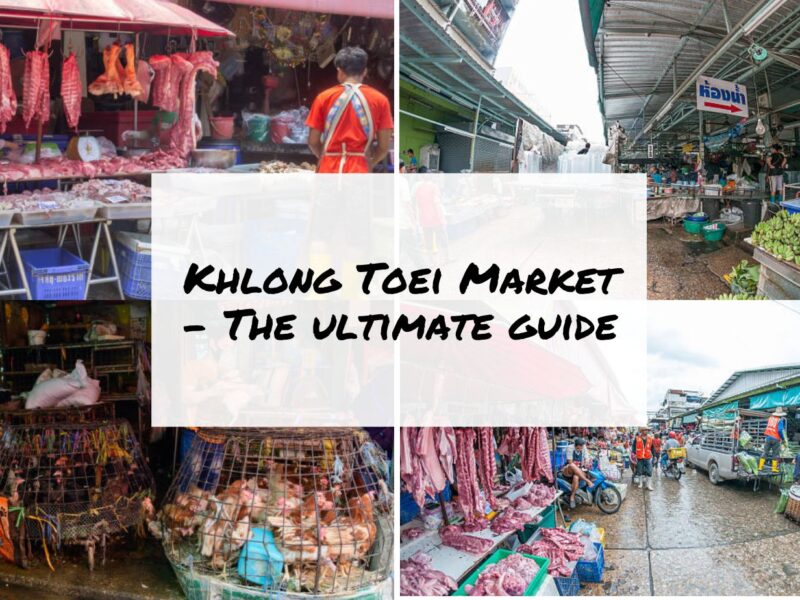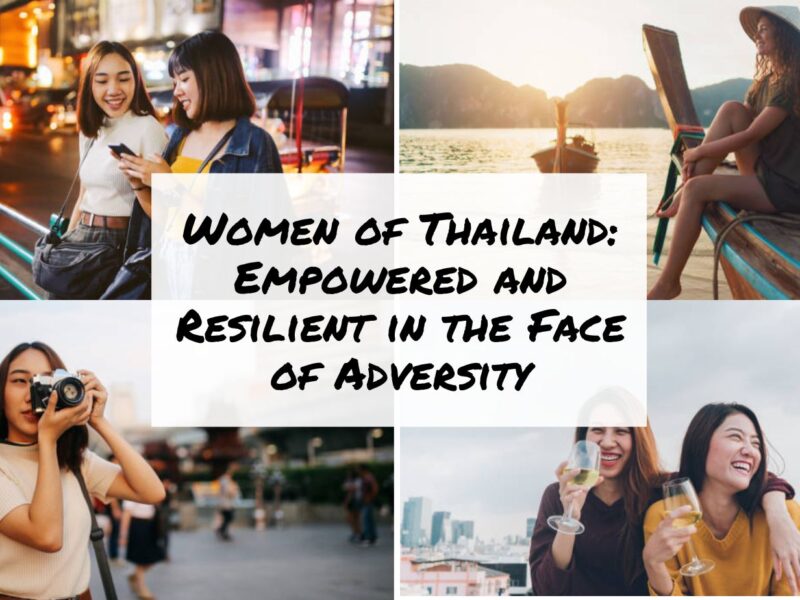Welcome to the “Land of Smiles”! Thailand is a country that has long been known for its stunning beaches, delicious food, and friendly people. But who are these people? What is their history, culture, and religion like? In this blog post, we’re going to dive deep into the fascinating world of Thai society and discover what makes them so unique. So sit back, relax, and get ready to learn about the amazing people of Thailand!
The People of Thailand

The people of Thailand are known for their warmth and friendliness towards visitors. They are always willing to help out and make you feel at home. Thai people have a deep sense of respect for their elders, which is reflected in the way they treat others.
Thai society is largely based on hierarchy, with an emphasis on maintaining social harmony. Family values play a big role in Thai culture, with many families living together under one roof.
Thai people place great importance on hospitality, which is evident in the way they welcome guests into their homes and businesses. It’s not uncommon to be offered food or drink as a sign of hospitality when visiting someone’s home or office.
One thing that distinguishes Thai people is their love for fun and celebration. Various festivals like Songkran (the water festival) and Loy Krathong (the lantern festival) allow them to showcase this side of themselves.
Despite being known for their friendly nature, it’s important to remember that Thais can also be quite reserved when it comes to expressing emotion. This isn’t because they lack emotion but rather because it’s considered impolite to show strong emotions in public settings.
The people of Thailand have a rich cultural heritage that has been passed down through generations. Their welcoming nature makes them some of the most hospitable hosts you will ever encounter!
The History of Thailand
Thailand has a rich and fascinating history that stretches back over 5,000 years. The first kingdom in Thailand was the Sukhothai Kingdom, which was founded in the 13th century by King Ramkhamhaeng. During this time, many of Thailand’s most iconic temples and artifacts were created.
In the centuries that followed, Thailand saw the rise and fall of several different kingdoms, including Ayutthaya and Lanna. These kingdoms thrived on trade with China and India, but also faced challenges from neighboring empires like Burma.
In the late 18th century, Siam (the old name for Thailand) began to modernize under King Rama I. He established Bangkok as the new capital city and built many new palaces, temples, and roads. This period of modernization continued through much of the 19th century under Rama IV.
However, Siam faced significant challenges from European colonial powers who sought to control its resources and trade routes. In particular, Britain played a major role in shaping Thai foreign policy during this time.
Despite these external pressures, Thailand managed to maintain its independence throughout much of the colonial era thanks to skilled diplomacy by its leaders. Today, Thailand is a vibrant country with a unique culture that reflects its long history as well as influences from around Southeast Asia.
The Culture of Thailand

Thailand is a country with a rich and diverse culture that has been shaped by centuries of history. The Thai people take great pride in their cultural heritage, which is reflected in everything from their art and architecture to their customs and traditions.
One of the most distinctive features of Thai culture is its emphasis on respect for authority and social hierarchy. This can be seen in how people interact with one another and in the rituals and ceremonies that are an integral part of everyday life.
Another important aspect of Thai culture is Buddhism, which plays a central role in shaping many aspects of daily life. From the brightly colored temples that dot the landscape to the frequent festivals and celebrations held throughout the year, Buddhism imbues every aspect of Thai society with a profound sense of spirituality.
Thai cuisine also reflects this deep connection to tradition and spirituality, with many dishes featuring symbolic ingredients such as holy basil or coconut milk. Whether you’re sampling street food from a bustling market or dining at an upscale restaurant, you’ll find that food is an essential part of any cultural experience in Thailand.
Thailand’s vibrant culture provides visitors with endless opportunities for exploration and discovery. Whether you’re interested in history, religion, or just soaking up local customs and traditions, there’s something here for everyone to enjoy!
The Religion of Thailand
Thailand is a country with a rich cultural heritage, and religion plays an important role in the lives of its people. The majority of Thais are Buddhists, who follow the teachings of Buddha.
Buddhism was introduced to Thailand over 2000 years ago, and it has been an integral part of Thai society ever since. The practice of Buddhism involves following the Four Noble Truths and Eightfold Path to enlightenment.
In addition to Buddhism, there are also sizable Muslim and Christian communities in Thailand. Muslims make up around 5% of the population, particularly in southern regions like Pattani and Narathiwat. Christians also have a presence in Thailand, especially among ethnic minorities such as Karen or Hmong people.
Despite these differences in religious beliefs, Thai society remains largely tolerant and accepting of all religions. In fact, many Thais incorporate elements from multiple religions into their daily practices – for example by offering food at local temples or mosques during festivals.
Understanding the role that religion plays within Thai culture can provide valuable insights into this fascinating country’s unique character!
Thai Migrations

Numerous migrations of people from various neighboring countries have shaped Thailand’s history. The Mon-Khmer people who came from Southern China thousands of years ago recorded the first recorded migration to Thailand.
The second significant migration that influenced Thai culture was made by the Tai people, who originated in southern China and migrated into Southeast Asia around the 7th century. They settled in what is now Northern Thailand, Laos, and Vietnam. Over time, they assimilated with other groups living there to form today’s modern Thai culture.
Another major migration took place during World War II when Chinese immigrants fled to Thailand as refugees. Their arrival contributed significantly to the development of trade and commerce in Thailand.
In recent decades, there has been an influx of migrant workers from surrounding countries like Myanmar (formerly Burma), Cambodia, and Laos. These migrants take on jobs that many Thais don’t want or work for lower wages than native-born Thais would accept.
Despite having different backgrounds and cultures, all these migrations have played a role in shaping present-day Thai society into a richly diverse country with a unique cultural identity.
How to get along with the people of Thailand
Thailand is known as the “Land of Smiles” for a reason. The Thai people are friendly, hospitable, and welcoming to tourists from all around the world. Here are some tips on how to get along with them:
- It’s essential to be respectful towards the locals. Thai culture values politeness and respectfulness highly. Always greet people with a smile and a wai (a traditional greeting gesture where you place your hands together in front of your chest).
- Learn some basic phrases in Thai language, such as “Sawasdee ka/kap” which means hello or good morning/afternoon/evening depending on the time of day.
- Dress appropriately when visiting temples or other religious places in Thailand by covering your shoulders and knees.
- Try their local food like Pad Thai or Tom Yum Goong – it shows that you have an interest in their culture.
- Avoid touching someone’s head, as it is considered disrespectful in Thailand since they believe that the head is sacred.
- Take off your shoes before entering homes or temples; this practice shows respect for their customs and traditions.
By following these simple guidelines while interacting with locals will make experiencing Thailand more enjoyable for both parties involved.
Large Thai Minority Groups in Thailand

As we’ve seen, Thailand is a diverse country with a rich history and culture. One aspect of that diversity is the presence of various minority groups throughout the country.
The largest minority group in Thailand is the Chinese, who have been living in Thailand for centuries and have contributed greatly to its economy and culture. Other significant minority groups include Malays, Indians, and Burmese.
It’s important to recognize and respect these different cultures within Thailand. By doing so, we can appreciate the unique perspectives they bring to Thai society and learn from them.
While it may be difficult to generalize about “the people of Thailand,” one thing is clear: they are a diverse group with much to offer. Whether you’re visiting as a tourist or living here long-term, taking the time to understand Thai history, culture, religion, migrations, and ethnic diversity will help you appreciate this fascinating country even more.
- Suan Son Pradipat Beach A Hidden Gem in Rayong Province - June 20, 2023
- Women of Thailand: Empowered and Resilient in the Face of Adversity - June 16, 2023
- Hong Thong: The Popular Thai Spirit You Need to Try - June 15, 2023


